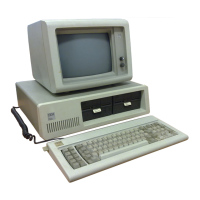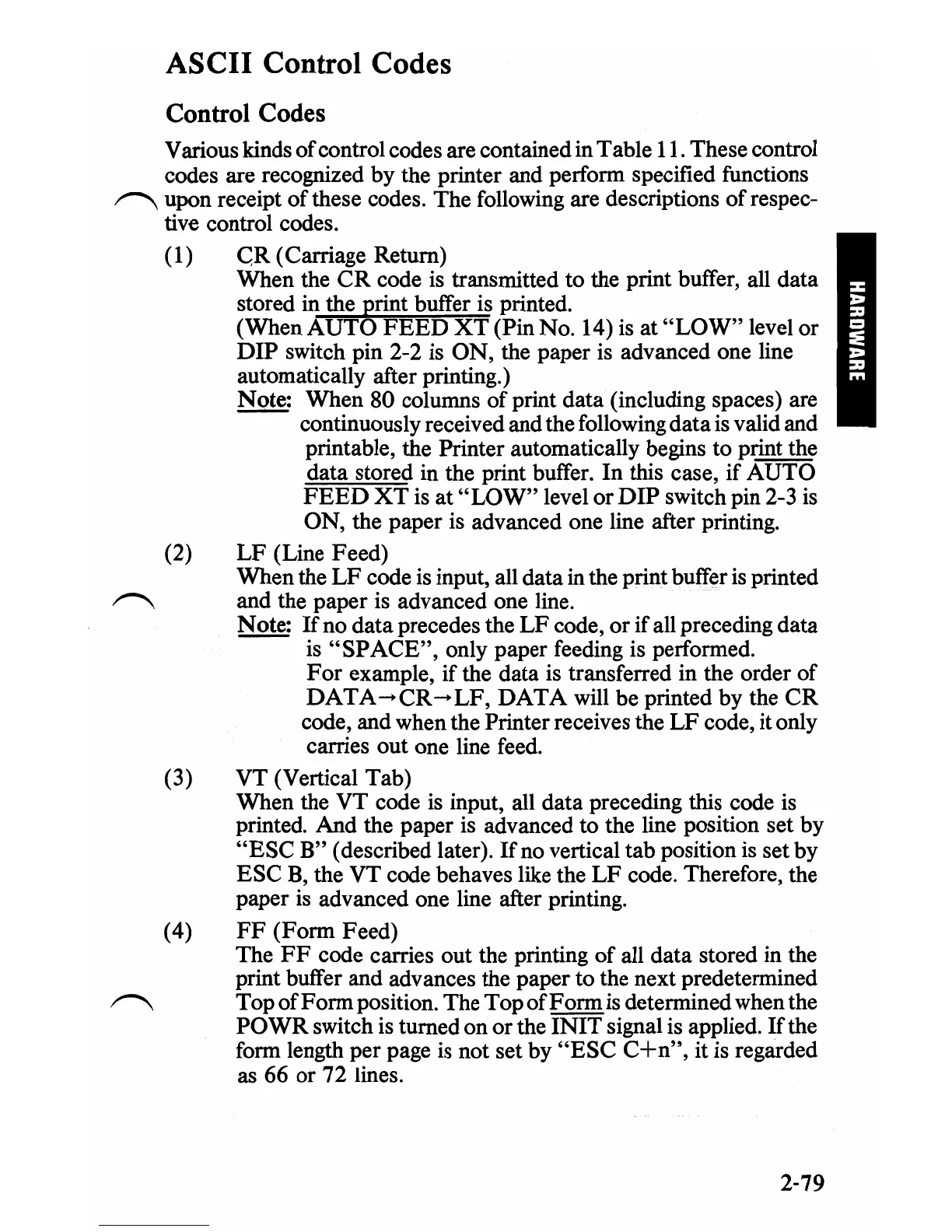ASCII
Control Codes
Control Codes
Various kinds
of
control codes are contained in Table 11. These control
codes are recognized by the printer and perform specified functions
~upon
receipt
of
these codes. The following are descriptions
of
respec-
tive control codes.
(1)
CR
(Carriage Return)
When the
CR
code
is
transmitted to the print buffer, all data
stored in the print buffer is printed.
(When
AUTO
FEED
XT
(Pin No. 14)
is
at
"LOW"
level or
DIP
switch pin 2-2
is
ON, the paper
is
advanced one line
automatically after printing.)
~
When 80 columns
of
print data (including spaces) are
continuously received and the following data
is
valid and
printable, the Printer automatically begins to print the
data stored in the print buffer.
In
this case, if
AUTO
FEED
XT
is
at
"LOW"
level
or
DIP
switch pin 2-3
is
ON, the paper
is
advanced one line after printing.
(2)
LF
(Line Feed)
When the
LF
code
is
input, all data in the print buffer
is
printed
~
and the paper
is
advanced one line.
Note:
If
no data precedes the
LF
code,
or
if all preceding data
is
"SPACE",
only paper feeding is performed.
For
example, if the data is transferred in the order of
DATA-+CR-+LF,
DATA
will be printed by the
CR
code, and when the Printer receives the
LF
code, it only
carries out one line feed.
(3) VT (Vertical Tab)
When the VT code
is
input, all data preceding this code
is
printed. And the paper
is
advanced to the line position set by
"ESC
B"
(described later).
If
no vertical tab position
is
set by
ESC
B,
the VT code behaves like the
LF
code. Therefore, the
paper
is
advanced one line after printing.
(4)
FF
(Form Feed)
The
FF
code carries out the printing of all data stored in the
print buffer and advances the paper to the next predetermined
Top
of
Form position. The Top
ofF
orm
is
determined when the
POWR
switch
is
turned on or the
INIT
signal is applied.
If
the
form length per page
is
not set by
"ESC
C+n",
it is regarded
as 66
or
72 lines.
2-79

